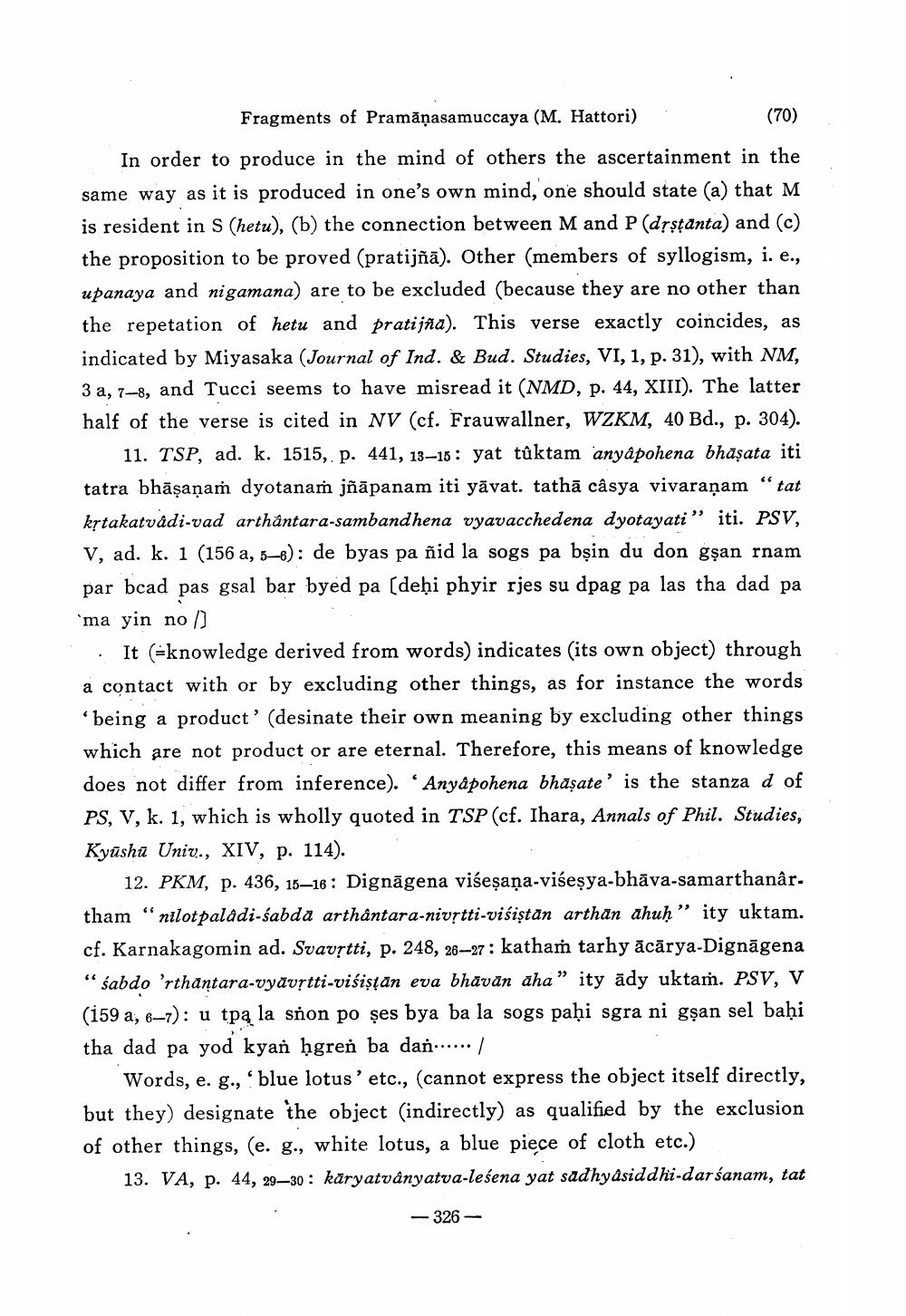Book Title: Fragments Of Pramana Samuccaya Author(s): Massaki Hattori Publisher: Massaki Hattori View full book textPage 5
________________ Fragments of Pramāṇasamuccaya (M. Hattori) (70) In order to produce in the mind of others the ascertainment in the same way as it is produced in one's own mind, one should state (a) that M is resident in S (hetu), (b) the connection between M and P (drstanta) and (c) the proposition to be proved (pratijñā). Other (members of syllogism, i. e., upanaya and nigamana) are to be excluded (because they are no other than the repetation of hetu and pratijña). This verse exactly coincides, as indicated by Miyasaka (Journal of Ind. & Bud. Studies, VI, 1, p. 31), with NM, 3 a, 7-8, and Tucci seems to have misread it (NMD, p. 44, XIII). The latter half of the verse is cited in NV (cf. Frauwallner, WZKM, 40 Bd., p. 304). 11. TSP, ad. k. 1515, p. 441, 13–15: yat tûktam anyápohena bhāṣata iti tatra bhāṣaṇam dyotanam jñāpanam iti yāvat. tathā câsya vivaranam "tat krtakatvádi-vad arthântara-samband hena vyavacchedena dyotayati” iti. PSV, V, ad. k. 1 (156 a, 5–6): de byas pa ñid la sogs pa bșin du don gșan rnam par bcad pas gsal bar byed pa (dehi phyir rjes su dpag pa las tha dad pa 'ma yin no 1) • It (=knowledge derived from words) indicates its own object) through a contact with or by excluding other things, as for instance the words 'being a product' (desinate their own meaning by excluding other things which are not product or are eternal. Therefore, this means of knowledge does not differ from inference). ‘Anyápohena bhaşate' is the stanza d of PS, V, k. 1, which is wholly quoted in TSP (cf. Ihara, Annals of Phil. Studies, Kyūshū Univ., XIV, p. 114). 12. PKM, p. 436, 15–16: Dignāgena višeșaņa-višeşya-bhāva-samarthanar. tham“nilotpaladi-sabda arthântara-nivstti-vićiştan arthân ahuh” ity uktam. cf. Karnakagomin ad. Svavrtti, p. 248, 26–27: katham tarhy ācārya-Dignāgena " sabdo 'rthantara-vyavrtti-visistan eva bhāvān aha” ity ādy uktaṁ. PSV, V (159 a, 6–7): u tpą la sńon po șes bya ba la sogs paḥi sgra ni gşan sel baḥi tha dad pa yod kyan hgren ba dan.... / Words, e. g., 'blue lotus’ etc., (cannot express the object itself directly, but they) designate the object (indirectly) as qualified by the exclusion of other things, (e. g., white lotus, a blue piece of cloth etc.) 13. VA, p. 44, 29--30: kāryatvânyatva-leśena yat sadhyasiddhi-darśanam, tat -326 -Page Navigation
1 ... 3 4 5 6
